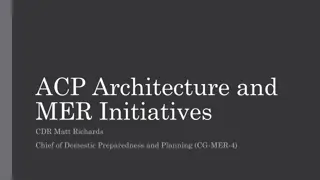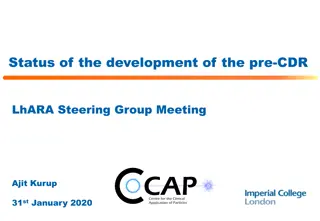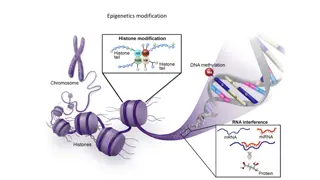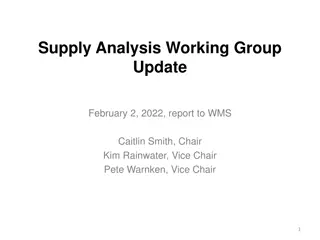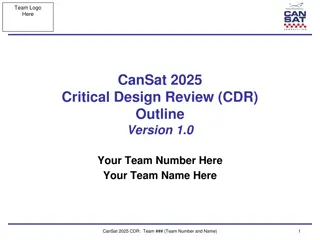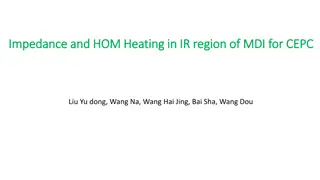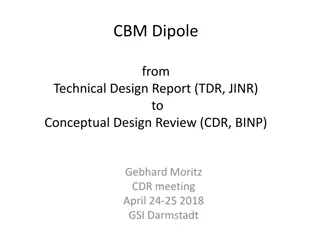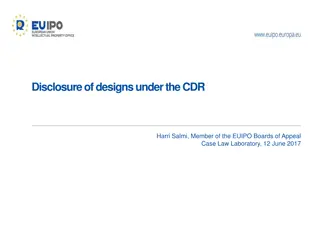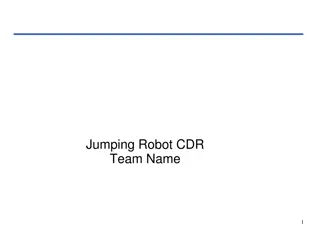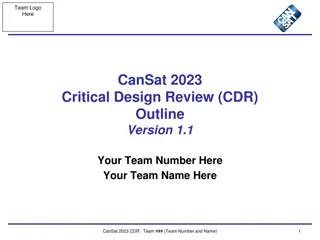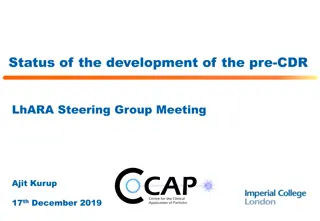
PHAT-TACO Experiment: Atmospheric Study in East Texas
Join Team Philosohook in their PHAT-TACO experiment to study atmospheric layers using instrumented sounding balloons in East Texas. Discover their goals, science background, mission objectives, and system design for this unique research project.
Download Presentation

Please find below an Image/Link to download the presentation.
The content on the website is provided AS IS for your information and personal use only. It may not be sold, licensed, or shared on other websites without obtaining consent from the author. If you encounter any issues during the download, it is possible that the publisher has removed the file from their server.
You are allowed to download the files provided on this website for personal or commercial use, subject to the condition that they are used lawfully. All files are the property of their respective owners.
The content on the website is provided AS IS for your information and personal use only. It may not be sold, licensed, or shared on other websites without obtaining consent from the author.
E N D
Presentation Transcript
Team Philosohook PHAT-TACO Experiment Pressure Humidity And Temperature Tests And Camera Observations Hannah Gardiner, Bill Freeman, Randy Dupuis, Corey Myers, Andrea Spring
Critical Design Review 1. Goals and objectives 2. Science background 3. Payload Design 4. Mechanical Design 5. Electronics Design 6. Software Design 7. Flight Operations 8. Budgeting and Development
Mission Goal To study the layers of the atmosphere using an instrumented sounding balloon flown in East Texas during May and to analyze the balloon and the environment surrounding the payload in order to study the relationship between the temperature and humidity profiles acquired during flight.
Objective The overall objective is to measure and record humidity, pressure, and internal and external temperature on a sounding balloon flight while taking video of the flight.
Science Background: Earths Atmosphere Troposphere Clouds Stratosphere Less humidity & lower pressure than the Troposphere http://www.wyckoffschools.org/eisenhower/teachers/chen/atmosphere/earthatmosphere. htm
US Model Atmosphere1 1976 A hypothetical vertical distribution of atmospheric temperature, pressure, and density Can calculate properties of the atmosphere Pressure Temperature Density 1U.S. Standard Atmosphere, 1976, U.S. Government Printing Office, Washington, D.C., 1976.
Balloon Radius Kaymont 3000 gm sounding balloon Ascent rate should be constant during flight Has not been in previous flights
Thermal Design Temperature Range: -80oC to 30oC Construction Material: Insulating foam with a low thermal conductivity Heat produced by electronics -3.9oC Component Lowest Temp. (oC) Highest Temp. (oC) Electronics -40 85 Pressure Sensor -20 85 Humidity Sensor -40 85 Temp Sensor -65 200 Camera -40 100 Batteries -40 60
Payload Design External Hexagonal 9.5 cm sides 10 cm high; 14 cm including the bottom 2 holes in the lid Temperature and Humidity Sensors Camera Internal BalloonSat, sensors and conditioning will be on the bottom Camera will be in a cut out in the top Camera will be secured by duct tape and an optional basswood shelf
Mechanical Drawings Front Side Axonometric Top
Weight Budget Weight (g) Uncertainty Measured or estimated Measured Component (+/-g) BalloonSat 65 2 Power Supply 1 65 2 Measured Power Supply 2 80 2 Measured Signal Conditioning Board and sensors 65 5 Estimated* Foam Structure 50 15 Measured Camera 95 5 Measured Total 420 28
Power Budget Component Current (mA) Voltage (V) Power (mW) Capacity (mA-hours) Temperature Sensor 1.2 12 14.4 4.8 Pressure Sensor 2.1 12 25.2 8.4 Humidity .5 12 6 2 Balloon Sat 52 12 624 208 Camera 220 7 1540 880 Power Supply 1 55.8 12 669.6 223.2 Power Supply 2 220 7 1540 880
Battery Selection Component Current (mA) Voltage (V) Power (mW) Capacity (mA-hours) Power Supply 1 58 12 680.6 232 Power Supply 2 220 7 1540 880
Software Background Basic stamp controls everything Measure and record temperature, pressure, and humidity every six seconds Check to see if the camera is recording Stop, then restart the video every 10 minutes Save camera status byte to EEPROM
Pre Flight Flowchart Must be able to calibrate Real Time Clock (RTC) LaACES Management will provide a flight profile of altitude vs time This program sets the time and allows for the During Flight program to start at the correct location First two bytes on the EEPROM store the location of the last saved data point
During Flight Controls all aspects of the payload Takes T,P,H data every 6 sec Also checks if the camera is still recording
During Flight Subroutines Makes sure the camera is recording If camera is not recording, this subroutine tries to start recording again Status nibble set so we know what is happening to the camera
During Flight Subroutines If the camera is recording, stop recording Set status nibble according to how the subroutine ends
Post Flight Flowchart Must be able to read out all data to debug screen Excel data sheet will contain conversions from ADC counts to atmospheres, kelvin, and % humidity Excel sheet will also convert timestamps into altitude
Post flight Balloon Radius Calculator Doesn t need entire balloon to calculate radius Works similar to most fitting programs Better than only using two points
Post Flight Data Processing EEPROM readout data Timestamp -> altitude ADC counts -> pressure, temperature, humidity Video data Video time + EEPROM information -> altitude Video -> size of balloon (pixels -> cm) Video -> payload passing through cloud
Magical Post-Flight Excel Sheet Data will be in comma delimited text file after downloading with Term232 Equations will already be programmed into sheet Also calculates uncertianties Will convert EEPROM timestamp into guzik- friendly format
Shock Test With the system powered up and the lid taped down, the payload will be dropped from a height of 5 ft. After the drop, the lid will be removed and all components checked and any shifting noted. Data must verify that the force involved in the test did not disrupt the data collection process.
Vacuum Test The powered up payload will be placed in the vacuum chamber. The vacuum will be turned on to decrease the pressure for one hour. Data must be verified that it was recorded accurately throughout the length of the test.
Thermal Test The powered up payload will be placed first at room temperature for 15 minutes. Refrigerator for 45 minutes. A dry ice cooled environment, approximately -78 C, for an hour. Refrigerator for 45 minutes. Room temperature for 15 minutes. Data must be verified that it was recorded accurately throughout the length of the test.
FLIGHT OPERATIONS: CALIBRATIONS
Temperature Calibration Use HOBO to measure temperatures at various locations alongside the sensor. The sensor and Hobo will measure Room temperature. Refrigerator. Icebox filled with dry ice. Outside the physics building. Each temperature placement will be carried out for 10-15 minutes. The voltage output data from our sensor will be compared to the data from the HOBO
Humidity Calibration The HOBO sensor will be used to accurately measure the humidity in various conditions Both placed in sealable container inside saturated environment at 0 C Seal container Transport container to varying temperatures The voltage output data from our sensor will be compared to the data from the HOBO
Humidity Calibration Humidity vs Temperature 1.2 1 0.8 Humidity [% rel] 0.6 0.4 0.2 0 0 5 10 15 Temperature [C] 20 25 30 35 http://www.engineeringtoolbox.com/humidity-ratio-air-d_686.html
Pressure Calibration We will adjust the variable resistor on the payload to set ground-level pressure The payload will be placed in the vacuum chamber We will stop the vacuum chamber and allow the pressure sensor to take several measurements at that pressure and record the pressure indicated by the vacuum chamber pressure gauge. A line of best fit will be created for the pressure sensor s output voltage versus absolute pressure.
Camera Calibration First we will start the camera to make sure it is operating properly. A fellow teammate holding a ruler will stand at a prescribed distance away from the camera. Video will be taken for about 1-2 minutes in order to collect data. After data collection is complete, the pixels of the camera images will be used to determine the angular resolution of the pixels.
Pre-Launch Checklist Time needed 10 minutes Event Verify that all components are ready for flight and operational. Load the correct pre-flight software and during flight software. Put in the appropriate fresh batteries for each of the power sources and make sure each power source is connected to its appropriate components. Place components in payload and tape the lid shut and check to make sure camera is facing up and through the hole in the lid. Attach the payload to the launch vehicle and check to make sure it is secure. Measure distance from Balloon to payload. Total Time 5 minutes 2 minutes 1 minute 10 minutes 2 minutes 30 minutes
Payload Recovery Telemetry will be tracked by GPS satellite signals via additional payloads on balloon vehicle Sounding beacon Colorful parachute
Budget Component Temperature Sensor Pressure Sensor Humidity Sensor Camera 32 GigaByte SD Card Expanded EEPROM Batteries Single OpAmp Integrated Circuit BalloonSat Miscellaneous parts and contingency Total Expected Expenditure: Price $0.02 $40 $14.11 $40 $64 $1.50 $12 $2.25 -- $170 $343.88
What is next Integration phase Components are created Connect together Test Debug Systems testing phase Calibrate systems Thermal, shock, and vacuum tests FRR Defense Flight Analysis and Science Presentation


